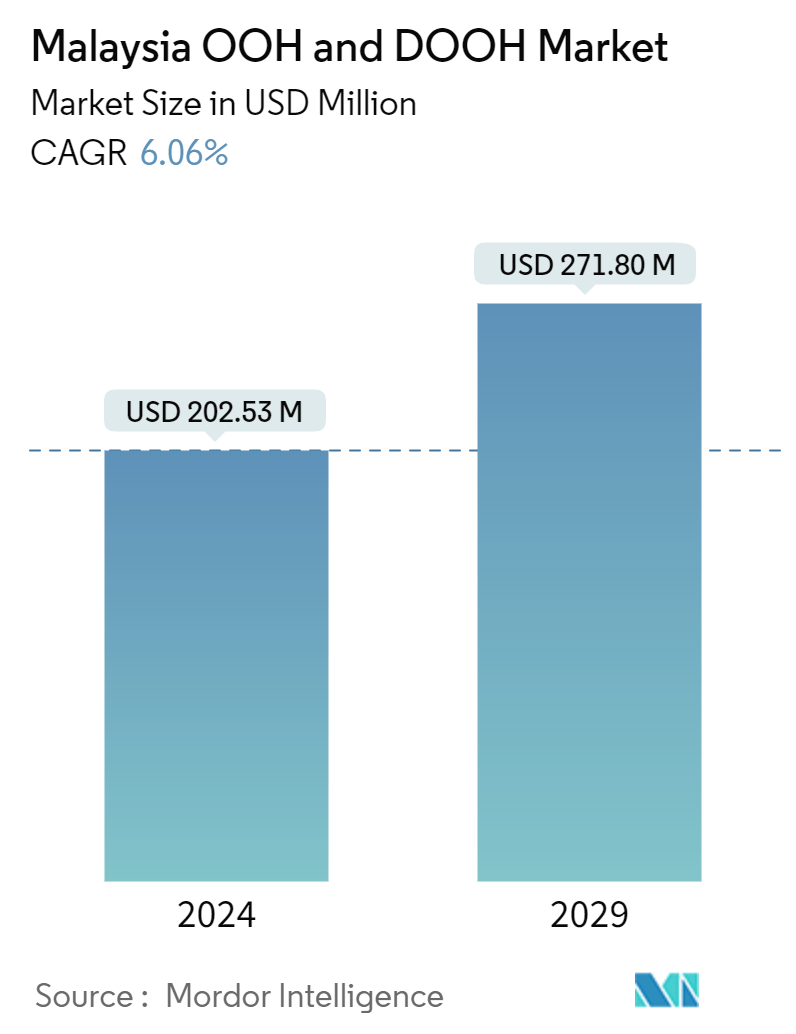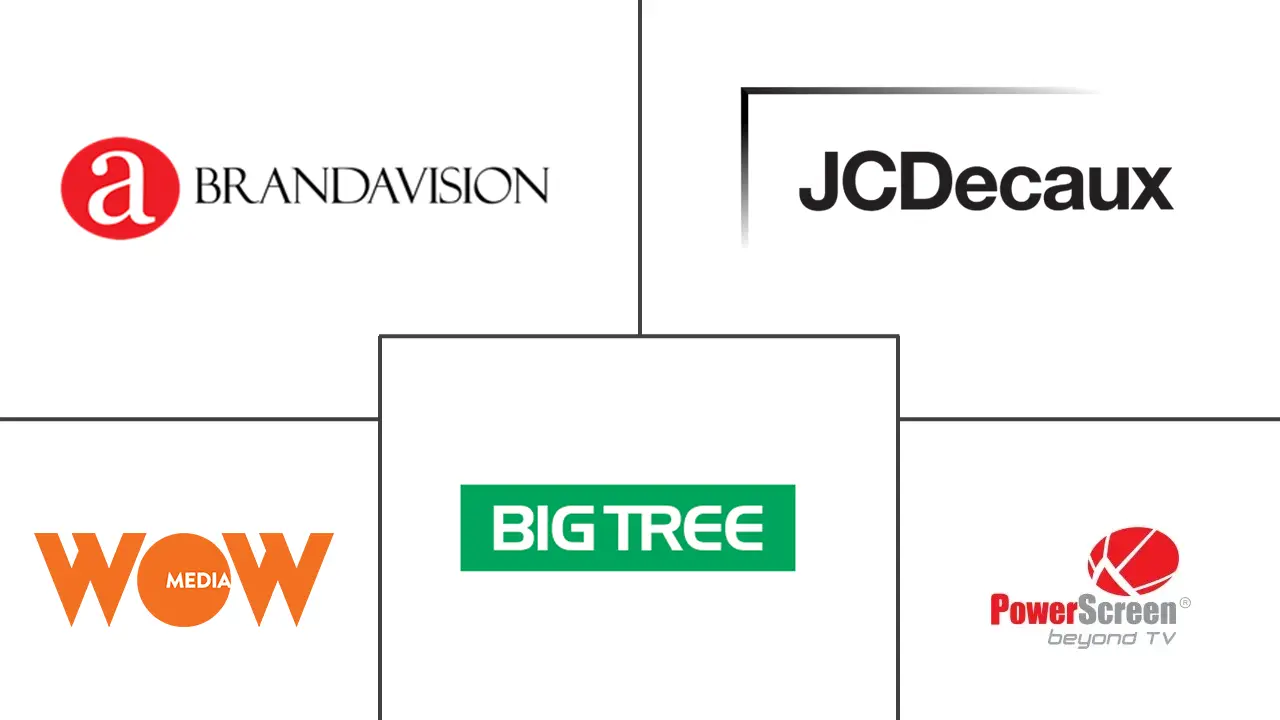Market Size of Malaysia OOH And DOOH Industry

| Study Period | 2019 - 2029 |
| Base Year For Estimation | 2023 |
| Market Size (2024) | USD 202.53 Million |
| Market Size (2029) | USD 271.80 Million |
| CAGR (2024 - 2029) | 6.06 % |
| Market Concentration | Low |
Major Players
*Disclaimer: Major Players sorted in no particular order |
Malaysia OOH and DOOH Market Analysis
The Malaysia OOH And DOOH Market size is estimated at USD 202.53 million in 2024, and is expected to reach USD 271.80 million by 2029, growing at a CAGR of 6.06% during the forecast period (2024-2029).
- Many companies are currently focusing on digital transformation and are shifting from traditional billboards to digital screens, creating opportunities for more dynamic and interactive advertising campaigns. Digital screens can display multiple advertisements and provide real-time updates, driving the market for OOH and DOOH in Malaysia.
- Several industry players are investing in innovation for out-of-home (OOH) and digital out-of-home (DOOH) campaigns to foster creativity. Notably, GroupM and Moving Walls have forged a strategic alliance to revolutionize DOOH advertising in Malaysia. This collaboration empowered GroupM's agencies (Mindshare, m/Six, MediaCom, and Wavemaker) to harness Moving Audiences Plus. This solution utilizes audience data, which facilitates planning, purchasing, measuring, and verifying ad plays, with the capability to engage all interconnected DOOH screens nationwide.
- The development of smart cities in Malaysia is providing new avenues for OOH and DOOH advertising. Smart city infrastructure, such as digital kiosks and smart transit systems, offers innovative advertising opportunities. For instance, in line with Malaysia's vision of 'Malaysia Madani,' the government prioritizes sustainability and green initiatives to transition the Federal Territories into smart cities by 2030.
- Setting up digital billboards and other DOOH infrastructure requires significant upfront costs in renting space, maintenance, installation, and removal, which contribute to the major costs. The high cost involved is a barrier for small organizations to enter the market. Moreover, Malaysia strictly prohibits advertisements in OOH spaces that feature offensive or inappropriate language. OOH advertising in Malaysia bans ads that make exaggerated or unrealistic claims. These regulations, along with several others, might limit the reach and effectiveness of campaigns, thus restricting the market’s growth.
- After the COVID-19 pandemic, there is a growing emphasis on using data and analytics to optimize OOH and DOOH campaigns. The growing trend toward innovative and interactive content helps in consumer engagement and facilitates achieving a better return on investment for the products and services offered.

